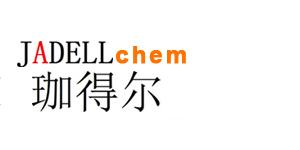Recombinant Human PD-1, His (HEK293-expressed) 当与T细胞受体的配体PD-L1或PD-L2结合时,抑制T细胞受体的激活信号。
Synonyms
rHuPD-1, His; PD1; CD279; PDCD1 ; 重组人 PD-1, His (HEK293 表达)
Species
HumanSource
HEK 293 Accession
Q15116 Gene ID
5133 Molecular Weight
30-40 kDa AA Sequence
LDSPDRPWNP PTFSPALLVV TEGDNATFTC SFSNTSESFV LNWYRMSPSN QTDKLAAFPE DRSQPGQDCR FRVTQLPNGR DFHMSVVRAR RNDSGTYLCG AISLAPKAQI KESLRAELRV TERRAEVPTA HPSPSPRPAG QFQHHHHHH Biological Activity
2 µg/mL (100 µL/well) of immoblized recombinant human PD-1-His can bind human PD-L1-Fc with a linear range of 24-390 ng/mL. Appearance
Lyophilized powder. Formulation
Lyophilized after extensive dialysis against PBS, 5% trehalose and mannitol. Endotoxin Level
<0.2 EU/μg, determined by LAL method. Reconstitution
Reconstitute the lyophilized recombinant Human PD-1, His (HEK293-expressed) (rHuPD-1, His) to 100 µg/mL using ddH2O or diluted with PBS. Storage & Stability
Lyophilized recombinant Human PD-1, His (HEK293-expressed) (rHuPD-1, His) is stored at -20°C. After reconstitution, it is stable at 4°C for 1 week or -20°C for longer. It is recommended to freeze aliquots at -20°C or -80°C for extended storage. Shipping
Room temperature in continental US; may vary elsewhere. Background
Programmed death-1 (PD-1) is a receptor on T cells that has been shown to suppress activating signals from the T cell receptor when bound by either of its ligands, programmed death-ligand 1 (PD-L1) or PD-L2. When PD-1 expressing T cells contact cells expressing its ligands, functional activities in response to antigenic stimuli, including proliferation, cytokine secretion, and cytotoxicity are reduced[1]. |



